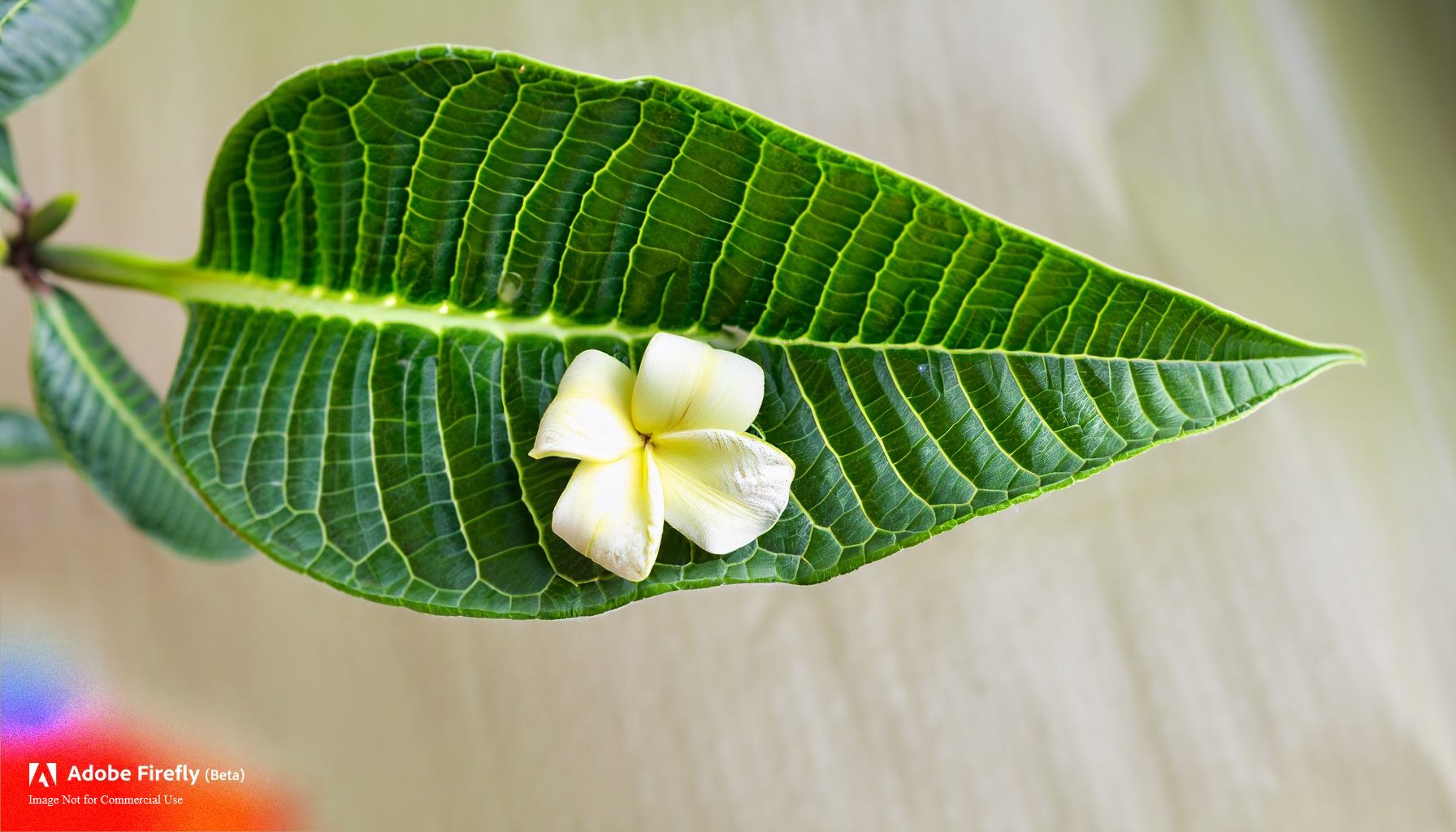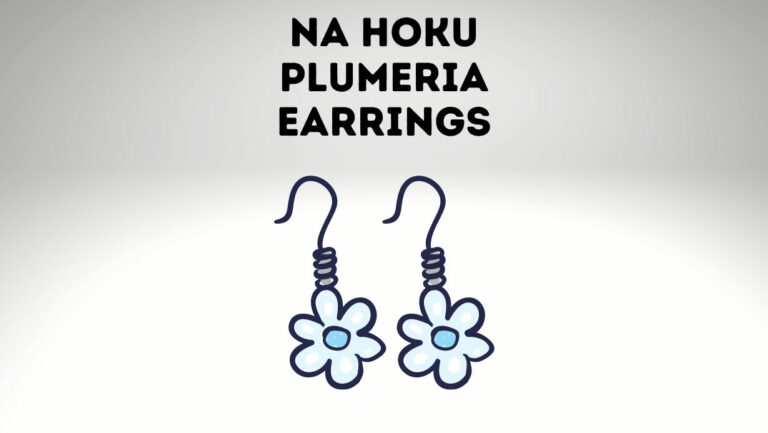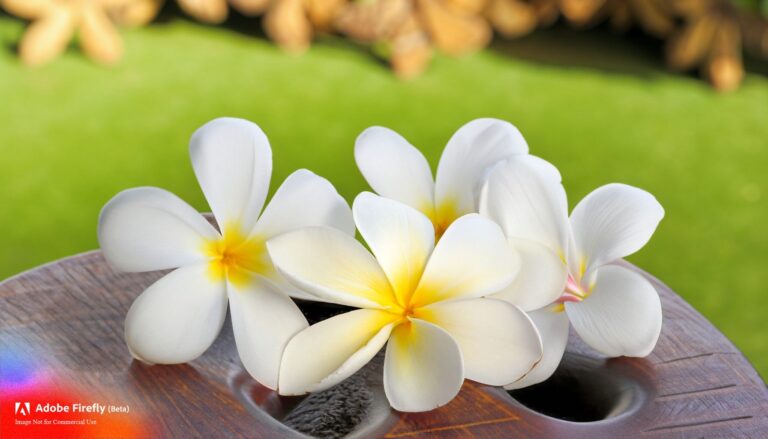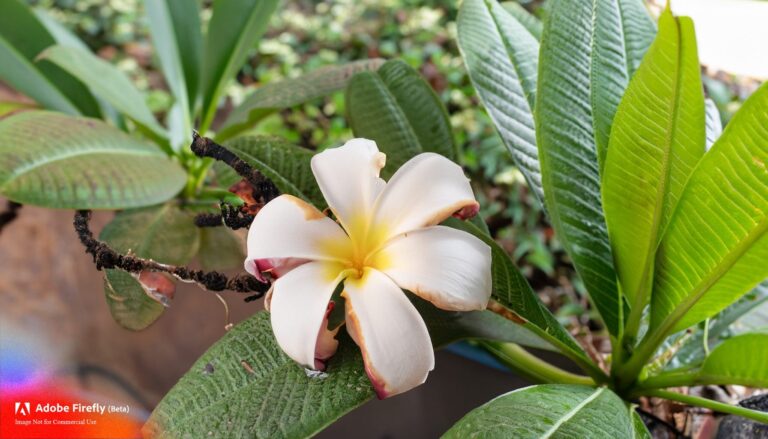
Plumeria plants, known for their vibrant and fragrant blossoms, occasionally exhibit signs of distress, such as leaf curling. Leaf curling can be a result of various factors, including environmental conditions, pests, diseases, or improper care. In this article, we will explore the causes of plumeria leaf curling and provide effective solutions to address this issue.
Plumeria leaf curling can be caused by various factors, and addressing the underlying issue is essential to restore the health of your plants. Here are some common causes of leaf curling and their corresponding solutions:
1. Environmental Stress: Cause: Exposure to excessive heat, direct sunlight, or strong winds can lead to leaf curling as a protective response. Solution: Provide partial shade during the hottest part of the day, especially in intense sunlight. Shield your plumerias from strong winds to reduce stress on the leaves.
2. Water Stress: Cause: Underwatering or overwatering can cause leaf curling. Underwatering leads to water stress, while overwatering can suffocate the roots and impede water uptake. Solution: Maintain a consistent watering schedule, allowing the soil to dry slightly between waterings. Ensure proper drainage to prevent waterlogged soil.
3. Pests and Diseases: Cause: Insect infestations like aphids, spider mites, or mealybugs can lead to leaf curling. Fungal diseases can also affect leaf health. Solution: Inspect the leaves and undersides for pests. Use organic remedies like neem oil or insecticidal soap. For fungal issues, apply appropriate fungicides and improve air circulation.
4. Nutrient Deficiencies: Cause: Lack of essential nutrients, particularly magnesium or nitrogen, can cause leaf curling and discoloration. Solution: Apply a balanced fertilizer with micronutrients. Use magnesium sulfate (Epsom salt) if magnesium deficiency is suspected.
5. Improper Pruning: Cause: Severe pruning can stress the plant and lead to leaf curling as it focuses on new growth. Solution: Prune gradually and avoid heavy pruning during the growing season. Aim to prune during the dormant period.
6. Chemical Exposure: Cause: Exposure to chemicals like pesticides, herbicides, or even certain cleaning agents can cause leaf curling. Solution: Avoid spraying chemicals near plumerias. If accidental exposure occurs, rinse the leaves thoroughly with water.
7. Humidity Levels: Cause: Extremely low humidity can cause plumeria leaves to curl as the plant tries to retain moisture. Solution: Increase humidity levels around the plant. Mist the leaves regularly or use a humidity tray.
8. Transplant Shock: Cause: Repotting or transplanting can temporarily stress the plant and lead to leaf curling. Solution: Give the plant time to acclimate to its new environment. Provide proper care, including adequate water and sunlight.
9. Viral Infections: Cause: Viruses can affect plumeria leaves, causing distortion, curling, and discoloration. Solution: Unfortunately, there’s no cure for viral infections. Remove and destroy affected plants to prevent spread to healthy plants.
10. Genetic Variation: Cause: Some plumeria varieties naturally have leaves that curl or fold. Solution: If the curling is consistent with the variety’s natural growth pattern, it might not require any intervention.
Solutions to Address Plumeria Leaf Curling
Addressing plumeria leaf curling involves identifying the underlying cause and applying appropriate solutions:
- Optimal Environmental Conditions: Maintain consistent environmental conditions. Avoid exposing plumeria plants to extreme temperature fluctuations, drafts, or sudden changes in light. If grown indoors, ensure they receive sufficient light without being exposed to direct sunlight for prolonged periods.
- Proper Watering: Water plumeria plants when the top inch of soil feels dry. Ensure proper drainage to prevent waterlogged soil. Using a well-draining potting mix can help prevent root stress.
- Pest Management: Regularly inspect plants for pests and take prompt action if infestations are detected. Use organic insecticidal soaps or neem oil to control pests without harming the plant.
- Disease Prevention: Maintain good air circulation around the plants to discourage fungal growth. If diseases are identified, treat with appropriate fungicides as recommended by local garden centers.
- Nutrient Management: Provide balanced fertilizer specifically formulated for plumerias to prevent nutrient deficiencies. A fertilizer with a slightly higher phosphorus content can promote flowering.
- Pruning Practices: Prune plumeria plants selectively and carefully. Remove dead or diseased growth and avoid excessive pruning during the growing season to prevent stress.
- Leaf Health: Regularly inspect leaves for signs of pests, diseases, or abnormalities. Remove affected leaves to prevent the issue from spreading.
- Support Structures: If you’re growing plumerias in containers, ensure proper staking or support for larger branches to prevent stress on the plant.
- Isolate Infected Plants: If you suspect a disease outbreak, isolate infected plants to prevent the spread to healthy plants.
- Mulching: Apply a layer of organic mulch around the base of the plant to retain moisture and regulate soil temperature.
Conclusion
Identifying the cause of leaf curling in your plumerias is essential to apply the appropriate solution. By addressing the underlying issue, whether it’s related to environmental conditions, pests, diseases, or other factors, you can help your plumerias regain their health and vitality, leading to beautifully unfurled leaves and vibrant blossoms.






